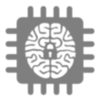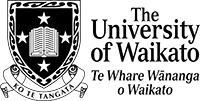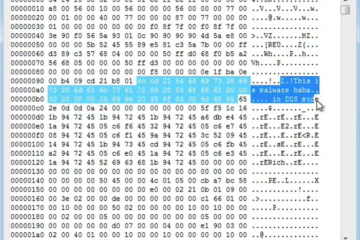2023
|
Ceschin, Fabrício; Botacin, Marcus; Bifet, Albert; Pfahringer, Bernhard; Oliveira, Luiz S; Gomes, Heitor Murilo; Grégio, André Machine Learning (In) Security: A Stream of Problems Journal Article Digital Threats, 2023, ISSN: 2692-1626, (Just Accepted). Abstract | Links | BibTeX @article{10.1145/3617897,
title = {Machine Learning (In) Security: A Stream of Problems},
author = {Fabrício Ceschin and Marcus Botacin and Albert Bifet and Bernhard Pfahringer and Luiz S Oliveira and Heitor Murilo Gomes and André Grégio},
url = {https://doi.org/10.1145/3617897
https://secret.inf.ufpr.br/papers/fabricio_mlinsec_dtrap.pdf},
doi = {10.1145/3617897},
issn = {2692-1626},
year = {2023},
date = {2023-09-01},
journal = {Digital Threats},
publisher = {Association for Computing Machinery},
address = {New York, NY, USA},
abstract = {Machine Learning (ML) has been widely applied to cybersecurity and is considered state-of-the-art for solving many of the open issues in that field. However, it is very difficult to evaluate how good the produced solutions are, since the challenges faced in security may not appear in other areas. One of these challenges is the concept drift, which increases the existing arms race between attackers and defenders: malicious actors can always create novel threats to overcome the defense solutions, which may not consider them in some approaches. Due to this, it is essential to know how to properly build and evaluate an ML-based security solution. In this paper, we identify, detail, and discuss the main challenges in the correct application of ML techniques to cybersecurity data. We evaluate how concept drift, evolution, delayed labels, and adversarial ML impact the existing solutions. Moreover, we address how issues related to data collection affect the quality of the results presented in the security literature, showing that new strategies are needed to improve current solutions. Finally, we present how existing solutions may fail under certain circumstances, and propose mitigations to them, presenting a novel checklist to help the development of future ML solutions for cybersecurity.},
note = {Just Accepted},
keywords = {},
pubstate = {published},
tppubtype = {article}
}
Machine Learning (ML) has been widely applied to cybersecurity and is considered state-of-the-art for solving many of the open issues in that field. However, it is very difficult to evaluate how good the produced solutions are, since the challenges faced in security may not appear in other areas. One of these challenges is the concept drift, which increases the existing arms race between attackers and defenders: malicious actors can always create novel threats to overcome the defense solutions, which may not consider them in some approaches. Due to this, it is essential to know how to properly build and evaluate an ML-based security solution. In this paper, we identify, detail, and discuss the main challenges in the correct application of ML techniques to cybersecurity data. We evaluate how concept drift, evolution, delayed labels, and adversarial ML impact the existing solutions. Moreover, we address how issues related to data collection affect the quality of the results presented in the security literature, showing that new strategies are needed to improve current solutions. Finally, we present how existing solutions may fail under certain circumstances, and propose mitigations to them, presenting a novel checklist to help the development of future ML solutions for cybersecurity. |
Giovanini, Luiz; Gilda, Shlok; Silva, Mirela; Ceschin, Fabrício; Shrestha, Prakash; Brant, Christopher; Fernandes, Juliana; Silva, Catia S; Grégio, André; Oliveira, Daniela People Still Care About Facts: Twitter Users Engage More with Factual Discourse than Misinformation Inproceedings Security and Privacy in Social Networks and Big Data, pp. 3–22, Springer Nature Singapore, Singapore, 2023, ISBN: 978-981-99-5177-2. Abstract | Links | BibTeX @inproceedings{10.1007/978-981-99-5177-2_1,
title = {People Still Care About Facts: Twitter Users Engage More with Factual Discourse than Misinformation},
author = {Luiz Giovanini and Shlok Gilda and Mirela Silva and Fabrício Ceschin and Prakash Shrestha and Christopher Brant and Juliana Fernandes and Catia S Silva and André Grégio and Daniela Oliveira},
url = {https://doi.org/10.1007/978-981-99-5177-2_1
https://secret.inf.ufpr.br/papers/People%20Still%20Care%20About%20Facts.pdf},
isbn = {978-981-99-5177-2},
year = {2023},
date = {2023-08-03},
booktitle = {Security and Privacy in Social Networks and Big Data},
pages = {3--22},
publisher = {Springer Nature Singapore},
address = {Singapore},
abstract = {Misinformation entails disseminating falsehoods that lead to society's slow fracturing via decreased trust in democratic processes, institutions, and science. The public has grown aware of the role of social media as a superspreader of untrustworthy information, where even pandemics have not been immune. In this paper, we focus on COVID-19 misinformation and examine a subset of 2.1M tweets to understand misinformation as a function of engagement, tweet content (COVID-19- vs. non-COVID-19-related), and veracity (misleading or factual). Using correlation analysis, we show the most relevant feature subsets among over 126 features that most heavily correlate with misinformation or facts. We found that (i) factual tweets, regardless of whether COVID-related, were more engaging than misinformation tweets; and (ii) features that most heavily correlated with engagement varied depending on the veracity and content of the tweet.},
keywords = {},
pubstate = {published},
tppubtype = {inproceedings}
}
Misinformation entails disseminating falsehoods that lead to society's slow fracturing via decreased trust in democratic processes, institutions, and science. The public has grown aware of the role of social media as a superspreader of untrustworthy information, where even pandemics have not been immune. In this paper, we focus on COVID-19 misinformation and examine a subset of 2.1M tweets to understand misinformation as a function of engagement, tweet content (COVID-19- vs. non-COVID-19-related), and veracity (misleading or factual). Using correlation analysis, we show the most relevant feature subsets among over 126 features that most heavily correlate with misinformation or facts. We found that (i) factual tweets, regardless of whether COVID-related, were more engaging than misinformation tweets; and (ii) features that most heavily correlated with engagement varied depending on the veracity and content of the tweet. |
Pimenta, Thalita Scharr Rodrigues; Ceschin, Fabricio; Gregio, Andre ANDROIDGYNY: Reviewing Clustering Techniques for Android Malware Family Classification Journal Article Digital Threats, 2023, ISSN: 2692-1626, (Just Accepted). Abstract | Links | BibTeX @article{10.1145/3587471,
title = {ANDROIDGYNY: Reviewing Clustering Techniques for Android Malware Family Classification},
author = {Thalita Scharr Rodrigues Pimenta and Fabricio Ceschin and Andre Gregio},
url = {https://doi.org/10.1145/3587471
https://secret.inf.ufpr.br/papers/androidgyny_thalita.pdf},
doi = {10.1145/3587471},
issn = {2692-1626},
year = {2023},
date = {2023-03-01},
journal = {Digital Threats},
publisher = {Association for Computing Machinery},
address = {New York, NY, USA},
abstract = {Thousands of malicious applications (apps) are daily created, modified with the aid of automation tools, and released on the World Wide Web. Several techniques have been applied over the years to identify whether an APK is malicious or not. The use of these techniques intends to identify unknown malware mainly by calculating the similarity of a sample with previously grouped, already known families of malicious apps. Thus, high rates of accuracy would enable several countermeasures: from further quick detection to the development of vaccines and aid for reverse engineering new variants. However, most of the literature consists of limited experiments—either short-term and offline or based exclusively on well-known malicious apps’ families. In this paper, we explore the use of malware phylogeny, a term borrowed from biology, consisting of the genealogical study of the relationship between elements and families. Also, we investigate the literature on clustering techniques applied to mobile malware classification and discuss how researchers have been setting up their experiments.},
note = {Just Accepted},
keywords = {},
pubstate = {published},
tppubtype = {article}
}
Thousands of malicious applications (apps) are daily created, modified with the aid of automation tools, and released on the World Wide Web. Several techniques have been applied over the years to identify whether an APK is malicious or not. The use of these techniques intends to identify unknown malware mainly by calculating the similarity of a sample with previously grouped, already known families of malicious apps. Thus, high rates of accuracy would enable several countermeasures: from further quick detection to the development of vaccines and aid for reverse engineering new variants. However, most of the literature consists of limited experiments—either short-term and offline or based exclusively on well-known malicious apps’ families. In this paper, we explore the use of malware phylogeny, a term borrowed from biology, consisting of the genealogical study of the relationship between elements and families. Also, we investigate the literature on clustering techniques applied to mobile malware classification and discuss how researchers have been setting up their experiments. |
2022
|
Ceschin, Fabrício; Botacin, Marcus; Gomes, Heitor Murilo; Pinagé, Felipe; Oliveira, Luiz S; Grégio, André Fast & Furious: On the modelling of malware detection as an evolving data stream Journal Article Expert Systems with Applications, pp. 118590, 2022, ISSN: 0957-4174. Abstract | Links | BibTeX @article{CESCHIN2022118590,
title = {Fast & Furious: On the modelling of malware detection as an evolving data stream},
author = {Fabrício Ceschin and Marcus Botacin and Heitor Murilo Gomes and Felipe Pinagé and Luiz S Oliveira and André Grégio},
url = {https://www.sciencedirect.com/science/article/pii/S0957417422016463
https://secret.inf.ufpr.br/papers/fabricio_eswa_22.pdf},
doi = {https://doi.org/10.1016/j.eswa.2022.118590},
issn = {0957-4174},
year = {2022},
date = {2022-08-22},
journal = {Expert Systems with Applications},
pages = {118590},
abstract = {Malware is a major threat to computer systems and imposes many challenges to cyber security. Targeted threats, such as ransomware, cause millions of dollars in losses every year. The constant increase of malware infections has been motivating popular antiviruses (AVs) to develop dedicated detection strategies, which include meticulously crafted machine learning (ML) pipelines. However, malware developers unceasingly change their samples’ features to bypass detection. This constant evolution of malware samples causes changes to the data distribution (i.e., concept drifts) that directly affect ML model detection rates, something not considered in the majority of the literature work. In this work, we evaluate the impact of concept drift on malware classifiers for two Android datasets: DREBIN (≈130K apps) and a subset of AndroZoo (≈285K apps). We used these datasets to train an Adaptive Random Forest (ARF) classifier, as well as a Stochastic Gradient Descent (SGD) classifier. We also ordered all datasets samples using their VirusTotal submission timestamp and then extracted features from their textual attributes using two algorithms (Word2Vec and TF-IDF). Then, we conducted experiments comparing both feature extractors, classifiers, as well as four drift detectors (Drift Detection Method, Early Drift Detection Method, ADaptive WINdowing, and Kolmogorov–Smirnov WINdowing) to determine the best approach for real environments. Finally, we compare some possible approaches to mitigate concept drift and propose a novel data stream pipeline that updates both the classifier and the feature extractor. To do so, we conducted a longitudinal evaluation by (i) classifying malware samples collected over nine years (2009–2018), (ii) reviewing concept drift detection algorithms to attest its pervasiveness, (iii) comparing distinct ML approaches to mitigate the issue, and (iv) proposing an ML data stream pipeline that outperformed literature approaches, achieving an improvement of 22.05 percentage points of F1Score in the DREBIN dataset, and 8.77 in the AndroZoo dataset.},
keywords = {},
pubstate = {published},
tppubtype = {article}
}
Malware is a major threat to computer systems and imposes many challenges to cyber security. Targeted threats, such as ransomware, cause millions of dollars in losses every year. The constant increase of malware infections has been motivating popular antiviruses (AVs) to develop dedicated detection strategies, which include meticulously crafted machine learning (ML) pipelines. However, malware developers unceasingly change their samples’ features to bypass detection. This constant evolution of malware samples causes changes to the data distribution (i.e., concept drifts) that directly affect ML model detection rates, something not considered in the majority of the literature work. In this work, we evaluate the impact of concept drift on malware classifiers for two Android datasets: DREBIN (≈130K apps) and a subset of AndroZoo (≈285K apps). We used these datasets to train an Adaptive Random Forest (ARF) classifier, as well as a Stochastic Gradient Descent (SGD) classifier. We also ordered all datasets samples using their VirusTotal submission timestamp and then extracted features from their textual attributes using two algorithms (Word2Vec and TF-IDF). Then, we conducted experiments comparing both feature extractors, classifiers, as well as four drift detectors (Drift Detection Method, Early Drift Detection Method, ADaptive WINdowing, and Kolmogorov–Smirnov WINdowing) to determine the best approach for real environments. Finally, we compare some possible approaches to mitigate concept drift and propose a novel data stream pipeline that updates both the classifier and the feature extractor. To do so, we conducted a longitudinal evaluation by (i) classifying malware samples collected over nine years (2009–2018), (ii) reviewing concept drift detection algorithms to attest its pervasiveness, (iii) comparing distinct ML approaches to mitigate the issue, and (iv) proposing an ML data stream pipeline that outperformed literature approaches, achieving an improvement of 22.05 percentage points of F1Score in the DREBIN dataset, and 8.77 in the AndroZoo dataset. |
Giovanini, Luiz; Ceschin, Fabrício; Silva, Mirela; Chen, Aokun; Kulkarni, Ramchandra; Banda, Sanjay; Lysaght, Madison; Qiao, Heng; Sapountzis, Nikolaos; Sun, Ruimin; Matthews, Brandon; Wu, Dapeng Oliver; Grégio, André; Oliveira, Daniela Online Binary Models are Promising for Distinguishing Temporally Consistent Computer Usage Profiles Journal Article IEEE Transactions on Biometrics, Behavior, and Identity Science, pp. 1-1, 2022. Links | BibTeX @article{9786768,
title = {Online Binary Models are Promising for Distinguishing Temporally Consistent Computer Usage Profiles},
author = {Luiz Giovanini and Fabrício Ceschin and Mirela Silva and Aokun Chen and Ramchandra Kulkarni and Sanjay Banda and Madison Lysaght and Heng Qiao and Nikolaos Sapountzis and Ruimin Sun and Brandon Matthews and Dapeng Oliver Wu and André Grégio and Daniela Oliveira},
url = {https://secret.inf.ufpr.br/papers/UsageProfiles_IEEE_TBIOM_2021.pdf},
doi = {10.1109/TBIOM.2022.3179206},
year = {2022},
date = {2022-06-03},
journal = {IEEE Transactions on Biometrics, Behavior, and Identity Science},
pages = {1-1},
keywords = {},
pubstate = {published},
tppubtype = {article}
}
|
Botacin, Marcus; Moreira, Francis B; Navaux, Philippe O A; Grégio, André; Alves, Marco A Z Terminator: A Secure Coprocessor to Accelerate Real-Time AntiViruses Using Inspection Breakpoints Journal Article ACM Trans. Priv. Secur., 25 (2), 2022, ISSN: 2471-2566. Abstract | Links | BibTeX @article{10.1145/3494535,
title = { Terminator: A Secure Coprocessor to Accelerate Real-Time AntiViruses Using Inspection Breakpoints},
author = {Marcus Botacin and Francis B Moreira and Philippe O A Navaux and André Grégio and Marco A Z Alves},
url = {https://doi.org/10.1145/3494535
https://secret.inf.ufpr.br/papers/marcus_coproc.pdf},
doi = {10.1145/3494535},
issn = {2471-2566},
year = {2022},
date = {2022-03-01},
journal = {ACM Trans. Priv. Secur.},
volume = {25},
number = {2},
publisher = {Association for Computing Machinery},
address = {New York, NY, USA},
abstract = {AntiViruses (AVs) are essential to face the myriad of malware threatening Internet users. AVs operate in two modes: on-demand checks and real-time verification. Software-based real-time AVs intercept system and function calls to execute AV’s inspection routines, resulting in significant performance penalties as the monitoring code runs among the suspicious code. Simultaneously, dark silicon problems push the industry to add more specialized accelerators inside the processor to mitigate these integration problems. In this article, we propose Terminator, an AV-specific coprocessor to assist software AVs by outsourcing their matching procedures to the hardware, thus saving CPU cycles and mitigating performance degradation. We designed Terminator to be flexible and compatible with existing AVs by using YARA and ClamAVrules. Our experiments show that our approach can save up to 70 million CPU cycles per rule when outsourcing on-demand checks for matching typical, unmodified YARA rules against a dataset of 30 thousand in-the-wild malware samples. Our proposal eliminates the AV’s need for blocking the CPU to perform full system checks, which can now occur in parallel. We also designed a new inspection breakpoint mechanism that signals to the coprocessor the beginning of a monitored region, allowing it to scan the regions in parallel with their execution. Overall, our mechanism mitigated up to 44% of the overhead imposed to execute and monitor the SPEC benchmark applications in the most challenging scenario.},
keywords = {},
pubstate = {published},
tppubtype = {article}
}
AntiViruses (AVs) are essential to face the myriad of malware threatening Internet users. AVs operate in two modes: on-demand checks and real-time verification. Software-based real-time AVs intercept system and function calls to execute AV’s inspection routines, resulting in significant performance penalties as the monitoring code runs among the suspicious code. Simultaneously, dark silicon problems push the industry to add more specialized accelerators inside the processor to mitigate these integration problems. In this article, we propose Terminator, an AV-specific coprocessor to assist software AVs by outsourcing their matching procedures to the hardware, thus saving CPU cycles and mitigating performance degradation. We designed Terminator to be flexible and compatible with existing AVs by using YARA and ClamAVrules. Our experiments show that our approach can save up to 70 million CPU cycles per rule when outsourcing on-demand checks for matching typical, unmodified YARA rules against a dataset of 30 thousand in-the-wild malware samples. Our proposal eliminates the AV’s need for blocking the CPU to perform full system checks, which can now occur in parallel. We also designed a new inspection breakpoint mechanism that signals to the coprocessor the beginning of a monitored region, allowing it to scan the regions in parallel with their execution. Overall, our mechanism mitigated up to 44% of the overhead imposed to execute and monitor the SPEC benchmark applications in the most challenging scenario. |





































